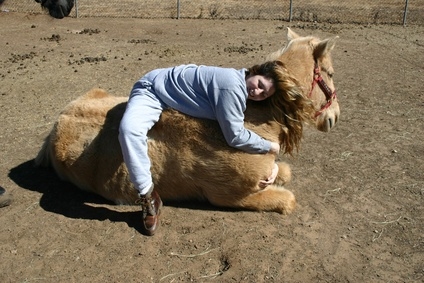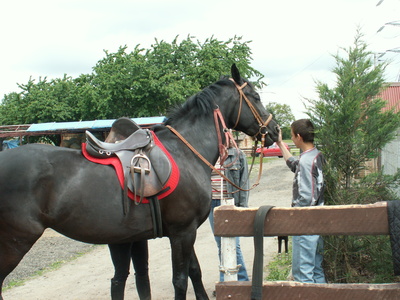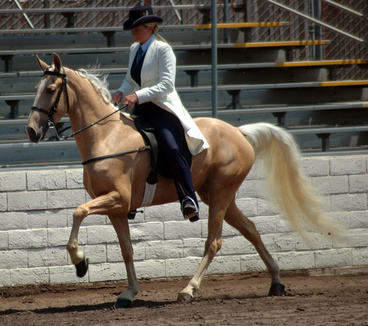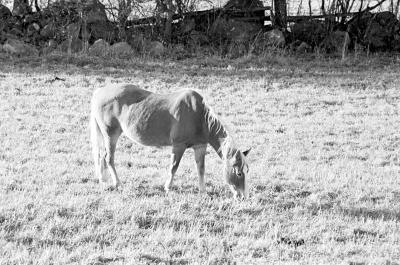
How to Make Your Horse Love You. In the wild, horses developed as prey animals for carnivores needing meat. The domestic horse retained this flight instinct and relies on its acute hearing, sense of smell and innate physical sensitivity to tell it who is friend and who is foe. Horse owners need to create a bond of respect and trust in their animals by communicating in the horse's language, say Charles Wilhelm and Allison Houston in "Building Your Dream Horse: Charles Wilhelm's Ultimate Foundation Training." In the horse world, respect equals love. Building a lasting relationship with your mount "will bring you all the love you have ever wanted," states Wilhelm.

Teach your horse good ground manners. Training your animal to respect your space when being lead, to pick up its feet for cleaning, and to stand quietly while being saddled or groomed shows the horse that you can be trusted as a leader.
Spend time with your horse when not riding or training. Sit in the stall or paddock area while your horse is eating or relaxing and allow it to learn your smell and habits. Talk quietly and calmly to your mount so that it learns your vocal inflections and recognizes you when you call its name.
Groom your horse daily. Touching your horse while gently massaging and cleaning its skin and hair proves to this prey animal that you will not hurt it. It also desensitizes the horse to contact, builds confidence and reassures your horse if it becomes confused or anxious, says Lesley Bayley in "Groundwork Training for Your Horse."
Train your horse using gentle methods. Keep your hands light on the reins to avoid pulling on the bit. Use the gentlest bit possible to control your horse's head, and only wear spurs if you can ride while keeping your leg loose down the horse's sides. Wield a crop to enforce your leg or seat aids; never crop a horse in anger or as a punishment.
Ride your horse often. Constant communication through body language both on the ground and in the saddle gives both horse and rider insights into each other's personalities and psyches, and can provide reassurance for both during moments of stress.
 How to Make Your Horse Love You
How to Make Your Horse Love You
How to
How to Make Your Horse Love You
How to Make Your Horse Love You
How to
 How to Get My Skinny Horse to Gain Weight
How to Get My Skinny Horse to Gain Weight
How to Get My Skinny Horse to Gain Weight
How to Get My Skinny Horse to Gain Weight
 What Are Some Things You Can Do to Show Your Horse That You Are the Boss?
What Are Some Things You Can Do to Show Your H
What Are Some Things You Can Do to Show Your Horse That You Are the Boss?
What Are Some Things You Can Do to Show Your H
 About Walking Horse Bridles
About Walking Horse Bridles
About Walk
About Walking Horse Bridles
About Walking Horse Bridles
About Walk
 How to Fatten Up a Skinny Horse
How to Fatten Up a Skinny Horse
How to
How to Fatten Up a Skinny Horse
How to Fatten Up a Skinny Horse
How to
Copyright © 2005-2016 Pet Information All Rights Reserved
Contact us: www162date@outlook.com